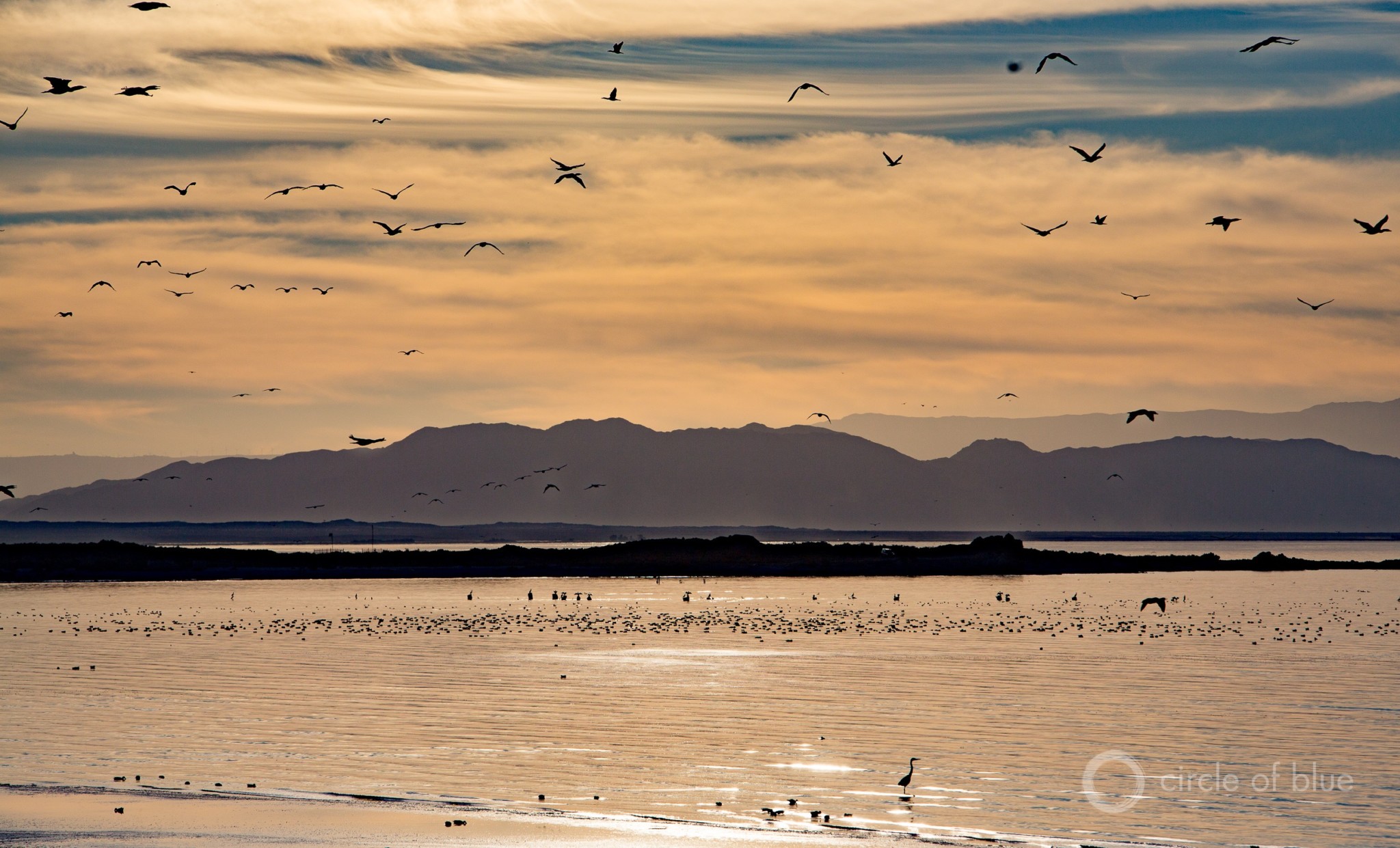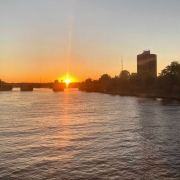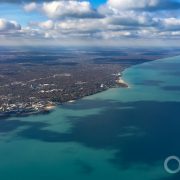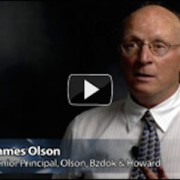U.S. Governors Outline Water Priorities
In State of the State speeches, governors emphasize pollution cleanup, collaboration, and funding.

By Brett Walton, Circle of Blue
State of the State speeches are where governors sketch their legislative priorities and report on the overall health of their dominions. The state of the state is almost always “strong” and water issues are occasionally mentioned.
Below are summaries of the governors’ references to water, climate, and the environment.
This post will be updated throughout speech season, which concludes on March 12 with Gov. John Bel Edwards of Louisiana.
Alabama
Kay Ivey, a Republican who took office last year after the previous governor resigned, did not mention water or the environment, other than to say that state agencies have improved their communication during disastrous weather.
Because she grew up in a small town in a rural county, Ivey said that rural Alabama is “central to [her] legislative agenda.” Broadband and health services were two items mentioned.
Alaska
Gov. Bill Walker repeated his message from 2017 that America’s only Arctic state is “ground zero for climate change.”
As for action, well, it’s tough in a state whose budget draws so heavily from fossil fuel wealth. (“We make nothing on oil discovered but left in the ground,” the governor also said in the speech.) Walker, an independent, highlighted his appointment of 20 experts to guide the state’s climate strategy.
Arizona
As in past years, Gov. Doug Ducey used his speech to take a jab at a neighbor’s water policies.
“Because in Arizona, we know the recipe for success,” the first-term Republican said. “Lower taxes. Light regulation. Great public schools. Superior quality of life. And responsible water policies that will protect us from sharing in California’s water crisis.”
Not all is harmonious in his own house, though. Ducey hinted at the power struggle between two agencies — the Central Arizona Water Conservation District, which manages the state’s main Colorado River canal, and the Arizona Department of Water Resources, the primary state water agency — over which will take the lead on state water policy.
Ducey implied that the agencies should stop quarreling and mimic earlier state leaders who put in place Arizona’s landmark groundwater management law in 1980.
“We must follow their lead and put forward responsible policies that will ensure Arizona speaks with one voice to secure the state’s future for generations to come.”
California
Gov. Jerry Brown used his last State of the State speech to reflect on past wins and rally support for his final battles in office. Brown praised lawmakers for passing, in 2014, a $7.5 billion water bond that the voters then approved. He was also adamant that the state needs a new water delivery system through the Sacramento-San Joaquin Delta, a multibillion-dollar project that will define his last year as governor.
“Along with clean air, clean water is a fundamental good that must be protected and made available on a sustainable basis. When droughts occur, conservation measures become imperative. In recent years, you have passed historic legislation to manage California’s groundwater, which local governments are now implementing.
In addition, you passed — and more than two-thirds of voters approved — a water bond that invests in safe drinking water, conservation and storage. As a result, we will soon begin expending funds on some of the storage we’ve needed for decades.
As the climate changes and more water arrives as rain instead of snow, it is crucial that we are able to capture the overflow in a timely and responsible way. That, together with recycling and rainwater recapture will put us in the best position to use water wisely and in the most efficient way possible. We are also restoring the Sacramento and San Joaquin watersheds to protect water supplies and improve California’s iconic salmon runs.
Finally, we have the California Waterfix, a long studied and carefully designed project to modernize our broken water system. I am convinced that it will conserve water, protect the fish and the habitat in the Delta and ensure the delivery of badly needed water to the millions of people who depend on California’s aqueducts. Local water districts — in both the North and South — are providing the leadership and the financing because they know it is vital for their communities, and for the whole state. That is true, and that is the reason why I have persisted.”
Connecticut
Gov. Dannel Malloy centered his speech on the theme of Connecticut Fairness. That means valuing hard work, protecting the vulnerable, and helping those in need. Because the planet is warming, that also means thinking about what living conditions we are bestowing future generations, he said. The two-term Democrat proposed that the state get 75 percent of its energy from clean sources by 2030.
Hawaii
Similar to recent years, Gov. David Ige spoke broadly about the need to protect and invest in the state’s natural resources and to change the island state’s energy economy.
Ige suggested that Hawaii restore its native forests by attracting dollars used to offset carbon emissions. He mentioned solar power projects and the path to 100 percent renewable energy, which is required by 2045 under state law.
“We want hydropower, sea water air conditioning, solar and wind energy, biomass and the fullest possible use of our waste streams,” he said.
Idaho
Gov. Butch Otter, in his last State of the State, dedicated a not-insignificant portion of his speech to recapping the year’s precipitation, which was the 12th wettest on record in Idaho. Otter, a Republican, also noted an agreement to conserve water in the Eastern Snake Plain Aquifer.
“As I said, it was a big year for water, whether it was falling from the sky or being recharged into Idaho’s largest underground reservoir. Runoff from last year’s snowpack on top of saturated soils required careful, coordinated management of dams and reservoirs.
The effort successfully reduced flooding and ensured that dam structures were secure. Meanwhile it provided a full allocation of water in the Boise River and Snake River reservoirs and plenty of carryover for use in 2018.
Just as importantly, for the first time since the 1950s we put more water back into the Eastern Snake Plain Aquifer than we pumped out in 2017. Water levels in the Lake Erie-sized aquifer had been dropping at an average rate of 215,000 acre-feet per year for 60 years.
But last year the Idaho Water Resource Board worked with private canal companies to recharge 317,000 acre-feet of water. A landmark settlement agreement between surface water users and ground water users resulted in a net gain of another 200,000 acre-feet.
Along with the wet weather, the result was a 660,000-acre-foot increase in water storage in the aquifer. Without our work together on these issues it would have been impossible to realize these historic advances in managing and protecting our most precious and fragile natural resource.”
Illinois
Gov. Bruce Rauner, a first-term Republican, addressed a Legionnaires’ disease outbreak at a state-run veterans healthcare facility that killed 13 people since 2015. The failure has become a campaign issue as Rauner seeks a second term.
“Our leadership team and our medical and caregiver staffs took all the right steps to deal with the crisis. We discovered the true cause of the outbreak through pro-active tests. We partnered with the CDC, took each of their recommendations, installed a new $6 million water treatment system, and instituted best practices for water flushing and purification.
According to CDC, the effort has resulted in a substantial reduction in cases of Legionnaires’ disease and detectable Legionella in the water systems.
Even though research shows that Legionella is everywhere, including this very Capitol, our goal is to prevent Legionella infections at the Quincy Home.
The CDC says it is impossible to eliminate the bacteria. But we will fight against it as hard as our veterans fought for us. The latest CDC recommendations are being implemented. We are going beyond the recommendations of experts, and we are investigating the possibility of entire system replacements, and perhaps even a new facility.”
Indiana
As he did in his first State of the State last year, Gov. Eric Holcomb, a Republican, spoke about the need to repair Indiana’s water systems. A priority, he said is to identify the highest needs for utilities, which a state agency will help accomplish over the next two years.
“It’s also high time for Indiana to address our aging water infrastructure. State oversight is spread across several agencies, so we’re going to form the executive branch governance structure needed to manage our operations and long-term strategy.
We’re eager to work with lawmakers to get the ball rolling.
In the meantime, I’ll direct the Indiana Finance Authority to designate half a million dollars each of the next two years for development of asset management plans for high-need water and wastewater utilities.”
Iowa
The former lieutenant governor, Gov. Kim Reynolds gave her first State of the State address. Like her predecessor, Reynolds, a Republican, stressed the need for cleaner waters. A keystone in the nation’s ag industry and a state within the Mississippi River watershed, Iowa has been a battleground for nitrate pollution for years.
“Improving water quality is a shared goal of Iowans. Urban and rural stakeholders have worked collaboratively making great strides.
My hope is that a water quality bill is the first piece of legislation I sign as governor.
Let me assure you, passage of this monumental legislation does not mean the water quality discussion is over; rather it ignites the conversation to implement and scale practices that will continue to make an impact on water quality.”
Kansas
In his final State of the State, Gov. Sam Brownback was dreaming dreams. The two-term Republican, ready to leave Kansas for a Trump administration post, had visions of renewable energy and sustainable groundwater use.
“I dream of a future Kansas exporting wind electricity across America. A Kansas known as the Renewable State. It could well be that in the future, those who have the wind resource will flourish like those who now have oil. We are growing as an energy state.
Dream with me of an Ogallala Aquifer that never runs dry because the use is sustainable. Of our reservoirs dredged, renewed and supplying the water we need in times of severe drought. Of us having a legal, binding allotment of water from the Missouri River and of an Arkansas River with water in its whole course.”
Michigan
Environmental troubles continue to pile up in Michigan. The Flint scandal brought lead pipes back to national prominence. Asian carp knock at the door of the Great Lakes. Now Michigan is dealing with dozens of sites where groundwater, rivers, and lakes have been contaminated by perfluorinated compounds, or PFAS.
Gov. Rick Snyder started a state PFAS task force, and the legislature is looking at some of the strictest drinking water standards in the county.
“This will not be the only contaminate we’re going to face in our world, so let’s be proactive,” Snyder said in his address, the last for the two-term Republican. “Let’s not be reactive, let’s not create panic, but do it in a thoughtful fashion where we go out and solve the problem. So I encourage you to continue to watch and work with us and speak up on how we can be a leader in this nation, on how we can be a leader in this nation on dealing with problems like PFAS.”
Minnesota
Gov. Mark Dayton lobbied for $167 million in bond funding for clean water projects.
New York
Gov. Andrew Cuomo, a Democrat, said that lawmakers must recognize the risks of water pollution.
The two-term Democrat outlined four water priorities: cleaning up a nearly four-mile-long plume of groundwater at a former Northrop Grumman and Naval base that is contaminated with 1,4-dioxane and other chemicals; suing the U.S. Environmental Protection Agency to continue the PCB cleanup in the Hudson River; halting the spread of harmful algal blooms; and addressing polluted discharges at the Niagara Falls wastewater treatment plant.
“Second, we face new challenges threatening our safety and quality of life: terrorism, climate change, environmental threats, including to our drinking water, and the growing opioid epidemic, a scourge across our state, that claimed more than 3,000 lives last year…
The growing concentration of chemicals and pollution in some areas is literally poisoning the water. In the beautiful lakes upstate, toxic algae is spreading. On Long Island, the Grumman plume carries 30 years of industrial stains and contaminants.”
North Dakota
Gov. Doug Burgum, who was elected in 2016 as the Dakota Access pipeline protests grew strength, used part of his speech to praise the cleanup of the protest site, along the Cannonball River.
“While there is more dialogue to be had about the future of infrastructure in our state, about the impact of industries on the environment, we can have those dialogues as North Dakotan’s in a peaceful way and we can have that in a productive way, but this is a celebration where we all came together and protected the environment,” the Republican said.
Burgum also noted state investments in flood protection, livestock water supplies during the summer 2017 drought, and rural water delivery systems. Despite a budget cut of more than 28 percent because of failing oil revenue, the state government “still continues to be a huge economic stimulus in itself,” he said, referring to the infrastructure projects.
South Carolina
Gov. Henry McMaster, a first-term Republican, objected to drilling for oil off the state’s coast, arguing that a spill would damage the beaches, marshes, and islands that are beloved by locals and tourists.
“South Carolina’s beaches, sea islands and marshes are the most beautiful in the nation, bringing 29 million people to South Carolina every year and supporting a $20 billion tourism industry.
From Little River and Myrtle Beach, to Georgetown and Charleston, to Hilton Head and Beaufort and Daufuskie Island, our economy and culture depend on a living, pristine coastline. Every municipality along our coast has voted to oppose drilling and seismic testing. They are right.
With offshore drilling comes the construction of onshore infrastructure – refineries, gas storage tanks, maintenance and operating facilities, trucks and traffic. We have no place to put it. It is incompatible with everything we have and do on our coast.
Oil spills, like hurricanes, can disrupt and damage a state’s economy. We cannot stop hurricanes, but we can avoid oil spills. We cannot take a chance. We must do whatever it takes to preserve this economic paradise we call “the beach, the marsh, the coast and the lowcountry.” It is made of gold.
South Dakota
Here’s a term: non-meandered waters. These are permanent lakes left behind when floods recede. In South Dakota recreational access to such waters was a sticking point in state politics — until last year, that is, when lawmakers passed a bill allowing access.
Gov. Dennis Daugaard, a Republican praised the compromise in his speech. “This process has created a new dialogue among sportsmen and landowners, which has been positive for all,” he said.
Daugaard also commiserated with farmers, who endured a severely dry summer and slumping commodity prices.
Vermont
Gov. Phil Scott said that the state will invest to protect things that are vulnerable and things that Vermonters value. By this he was referring to water quality and the effects of climate change.
Entering his second year in office, the Republican governor highlighted $51 million spent in 2017 on clean water projects.
The Climate Action Commission that the governor established last July issued five preliminary recommendations including expanding electric vehicle use, examining the benefits of joining a carbon market, and insulating buildings. Scott said his administration would work to put the recommendations into practice.
Washington
Gov. Jay Inslee, a two-term Democrat, told lawmakers that they “have a duty to focus on our legacy, which can be long.” Voting rights, internet access, education, mental health, birth control, opioids — all worthy and weighty topics on their own — were lead-ins for Inslee’s big pitch: that Washington state ought to begin taxing carbon emissions.
“We must recognize an existential threat to the health of our state, a threat to the health of our children, and a threat to the health of our businesses that demands action,” he said. “That threat is climate change.”
Revenue from a carbon tax, which would start at $20 per ton under the governor’s plan and bring in an estimated $1.5 billion in the first two years, could help Washington in a number of ways, Inslee said. On the environment he mentioned upgrading irrigation and water utility systems and reducing pollution in waterways.
West Virginia
Like last year in his first State of the State, Gov. Jim Justice continued to advocate for a West Virginia farm industry. Justice, elected as a Democrat but now a Republican, is a billionaire who made his money in farming and coal mining.
“Agriculturally we all know that agriculture could be a sleeping giant in West Virginia,” he said. “And I know a lot about agriculture, guys and girls. A lot. An awful lot. And I can tell you it’s for real that we could have chicken houses or hog confinement buildings on mountaintop removal sites. We could have vegetable or horticultural specialty crops grown and within a rock’s throw of the marketplace.”
He continued, with comparable hype: “All of those things are for real possible — because you know why? We have pristine water. We have manure disposal. We have absolutely a disease-free atmosphere. Disease-free.”
Wyoming
In his last State of the State speech, Gov. Matt Mead reminisced. When he mentioned water it was to review task already underway: a state water strategy, published in 2015 that seeks to build 10 reservoirs in a decade, and challenges to federal rules that he thought went too far: the Waters of the United States rule, to define the scope of the Clean Water Act, and the Bureau of Land Management’s hyrdaulic fracturing rule.
Brett writes about agriculture, energy, infrastructure, and the politics and economics of water in the United States. He also writes the Federal Water Tap, Circle of Blue’s weekly digest of U.S. government water news. He is the winner of two Society of Environmental Journalists reporting awards, one of the top honors in American environmental journalism: first place for explanatory reporting for a series on septic system pollution in the United States(2016) and third place for beat reporting in a small market (2014). He received the Sierra Club’s Distinguished Service Award in 2018. Brett lives in Seattle, where he hikes the mountains and bakes pies. Contact Brett Walton








